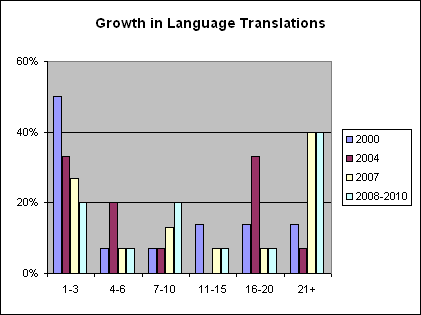As we gear up for Gilbane Boston 2007, the number of possible topics to include in the tracks related to search seems boundless. The search business is in a transitional state but in spite of disarray is still pivotal in its impact on business and current culture. The sessions will reflect the diversity in the market.
One trend is quite clear; the amount of money and effort being expended for Web search or site search on commercial Web sites is a winner in the “search technology” revenues war with annual revenues measuring well into the $billions. On the other hand, a recent Gartner study described the 2006 revenues for enterprise search as below $400M. This figure comes from reading an excellent article, Enterprise Search: Seek and Maybe You’ll Find, by Ben DuPont in Intelligent Enterprise. Check it out.
The distinctions between search on the Web and search within the enterprise are numerous but here are two. First, Internet Web search revenue is all about marketing. Yes, we use it to discover, learn, find facts, and become more informed. But when companies supplying search technology to expose you to their content on the Internet they do so to facilitate commerce. If it falls into the hands of organizations that have other intent, libraries or government agencies, so be it.
As we all know, when we are at work, seeking to discover, learn or find facts to do our jobs better, we need a different kind of search. Thus, we seek a clear search winner built just for our enterprise with all of its idiosyncrasies. The problem is that what is inside does not look like the rest of the world’s content as it is aggregated for commercial views. Enterprises are unique and operate sometimes chaotically, or, at best, with nuanced views of what information is most important.
The second distinction relates to taxonomies, and the increase in their development and use. I’ve seen a dramatic increase in job postings for “taxonomists” and have managed several projects for enterprises over the years to build these controlled lists of terms for categorizing content. What is noteworthy about recent job opportunities is that most seem to be for customer facing Web sites. Historically, organizations with substantial internal content (e.g. research reports, patents, laboratory findings, business documents) hired professionals to categorize materials for a narrowly defined audience of specialists. The terminology was often highly unique, could number in the hundreds or thousands of terms, even for a relatively small enterprise. This is no longer a common practice.
Slow financial growth in enterprise search markets is no surprise. Like many tools designed and marketed for departments not directly tied to revenue generation, search goes begging for solid vertical markets. Search’s companion technologies are also struggling to find a lucrative toehold for use within the organization. Content management systems integrated with rich and efficient taxonomy building and maintenance functions are hard to find.
I am confident that tools in CMS products for building and maintaining complex taxonomies will not improve until enterprises find a solid business reason to put professional human resources into doing content management, taxonomy development, search, and text analytics on their most important knowledge assets. This is a tough business proposition compared to the revenues being driven on the Internet. What businesses need to keep in mind is that without the ability to leverage their internal knowledge content assets better, smarter and faster, there won’t be innovative products in the pipeline to generate commerce. Losing track of your valuable intellectual resources is not a good long term strategy. Once you begin committing to solid content resource management strategies, enterprise technology products will improve to meet your needs.



